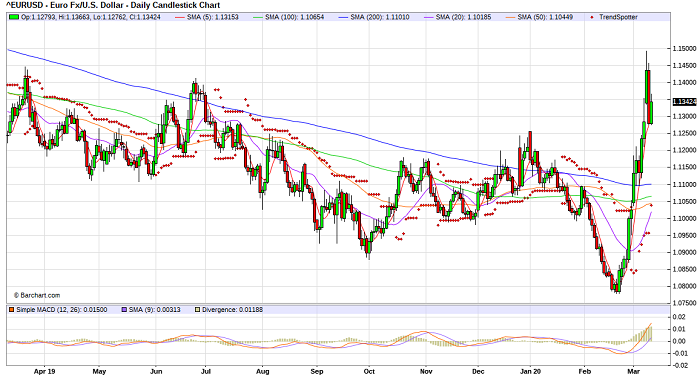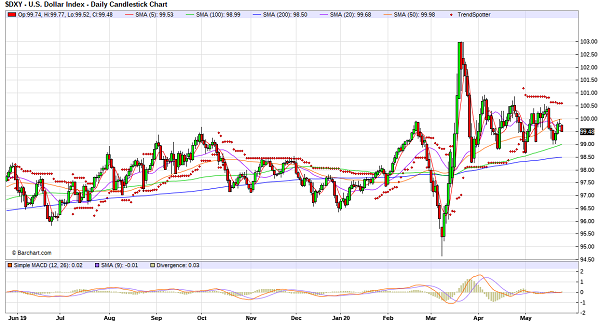Commodity Price
Commodity Price
Commodity Price. There are always three prices while financial markets are open: the bid, the ask and the last price. The bid is the highest current order to buy, and the offer is the lowest current order to sell. To buy you can post a bid, or buy from the offer price. To sell you can post an offer, or sell to the bid price. When a buyer and seller meet the trade is recorded, with the most recent transaction being called the Last price.
- Details
- Parent Category: Contract Negotiation
- Category: Commodity Price
- Hits: 10924
What is Basis. Basis is the difference between the futures price and your local cash price. For example, if the May futures contract is trading at $220 and the cash price is $200, the cash price is $20 under May ($200 - 220 = -20). So the basis is -20. More specifically, basis is the difference between the current local cash price and the futures price of the contract with the closest delivery month. For example, corn basis in February is usually defined as the difference between the current cash price and the current March futures price. Analytics world cash and future markets of: corn, barley, feed wheat, milling wheat
Basis data for Odessa was computed by subtracting Thursday’s closing futures price from Thursday’s cash price. Cash price represents the price for yellow corn. Cash prices were collected from every county in each price reporting district. Since there is usually a range of several cents in cash quotations, the midpoint of the daily prices was used.
- Details
- Parent Category: Contract Negotiation
- Category: Commodity Price
- Hits: 11212
Marketing of Agricultural Commodities.
CPT Spot Prices in UAH at Ukrainian Black Sea ports.
Cereals (barley, feed wheat, milling wheat, corn)
Oilseeds (sunseeds, rapeseeds, soya)
Cereals/ CPT/ Big port/ UAHOilseeds/ CPT/ Big port/ UAH
Cash market via Futures
Cash USD FOB Ukraine v Futures USD FOB Mosel Matiff
- Details
- Parent Category: Contract Negotiation
- Category: Commodity Price
- Hits: 10019
We have nice picture for today regading cereals before harvesting
Cereals Future June 16/06/9 and against Future Cereals January 16-1-15
Marketing of Agricultural Commodities: Cereals (barley, feed wheat, milling wheat, corn)
Have to check Spot Prices in at Black Sea ports for new crop.
| Date | 23-Jul-12 |
| UA | CPT, USD |
| wheat 12.5 | 250 |
| wheat 11.5 | 249 |
| feed wheat | 246 |
| barley | 288 |
| corn | 239 |
| rapeseeds 00 | 598 |
| rapeseeds | 586 |
| soya | 532 |
| peas | 332 |
- Details
- Parent Category: Contract Negotiation
- Category: Commodity Price
- Hits: 15367
We have positive picture regading Oilseeds Futures.
TRADE PROCEDURE
1. Seller issue SCO Buyer confirms soft offer and issues up-to-date irrevocable corporate purchase order (ICPO) with full banking information address to the principal seller.
2. Seller issue FCO Buyer confirmed and signs returns full corporate offer (FCO) with appropriate authorized signature, seal, including the following documents:
(1) acceptance letter,
(2) buyer’s corporate license
(3) comprehensive company profile
(4) scanned copy of buyer’s international passport.
The above mention documents will serve purpose of verification before issuance of Refinery Allocation, Talon Number acquisition and change of ownership title to buyer company name. Under Gold Group acceptance of the signatory and initial on the returned FCO, including all the requested documents, p will issue Talon Number and Application form to buyer, Buyer will endorse sign send it back to seller.
- Details
- Parent Category: Contract Negotiation
- Category: Commodity Price
- Hits: 10819
Focus futures indicators with export or import operations with crops for purchase or sale of the goods.
Special attention is given to change currencies on the FOREX market and on the definition of the basis when using Futures.
Forex - EUR/USD, GBP/USD, USD/CHF, USD/JPY. Technical analysis.
Forex - EUR/USD
Index USD
- Details
- Parent Category: Contract Negotiation
- Category: Commodity Price
- Hits: 11238
Hedging is based on the principle that cash market prices and futures market prices tend to move up and down together. This movement is not necessarily identical, but it usually is close enough that it is possible to lessen the risk of a loss in the cash market by taking an opposite position in the futures market.
Taking opposite positions allows losses in one market to be offset by gains in the other. In this manner, the hedger is able to establish a price level for a cash market transaction that may not actually take place for several months.
The Short Hedge.
To give you a better idea of how hedging works, let’s suppose it is May and you are a soybean farmer with a crop in the field; or perhaps an elevator operator with soybeans you have purchased but not yet sold. In market terminology, you have a long cash market position. The current cash market price for soybeans to be delivered in October is $9.00 per bushel. If the price goes up between now and October, when you plan to sell, you will gain.
On the other hand, if the price goes down during that time, you will have a loss. To protect yourself against a possible price decline during the coming months, you can hedge by selling a corresponding number of bushels in the futures market now and buying them back later when it is time to sell your crops in the cash market.
- Details
- Parent Category: Contract Negotiation
- Category: Commodity Price
- Hits: 11136
Twenty simple rules of Trading Commodities.
1. Trade like a guerilla warrior. You must learn to adapt quickly to changes. If the winning side is changing, don't hesitate to join the new party and to commit all your forces to this side (capital, mental, emotional)...Until the market conditions change. Don't get married to trades.
2. Be disciplined. Create a game plan then stick to it. A trade does not simply consist of a position. It consists of a position plus reasons for having the position plus a stop loss level plus profit taking levels. In the long run your discipline will save you when markets get rough.
3. Buy high ...Sell higher / Sell Low ...Buy Lower. Do not try to bottom fish or pick tops. When you think you know the trend then follow it.
4. Think big picture but trade like a technical analyst. You must understand the fundamentals behind your investment ideas but you need to understand the Technical Analysis too. When your fundamental and technical signals point to the same direction...you have a good chance to have a winning trade.
5. Do not use excessively tight stop losses. Spend more time identifying a good entry point. Be patient. Give some freedom to the market. Place your stop losses carefully.



